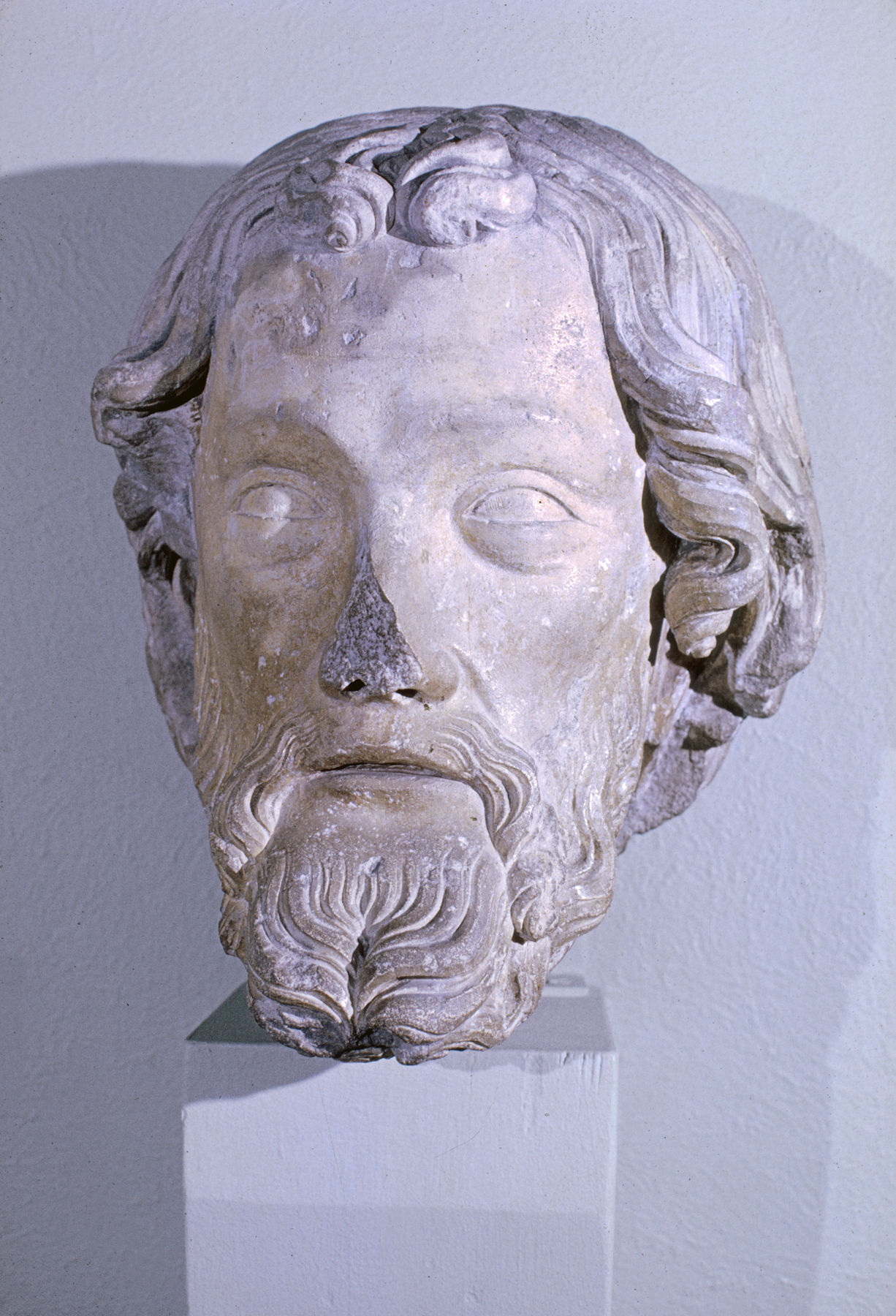Head of an Apostle
(Medieval Europe )
Scientific analysis carried out on this apostle's head shows that the limestone came from a quarry near Paris. The head, which was made for a pillar or pier statue in a church, is beautifully carved with a smooth face and delicate lines under the eyes. The custom of attaching figures to columns or piers derives from medieval theology and the designation of apostles and saints as the living pillars of the Church.
Provenance
Provenance (from the French provenir, 'to come from/forth') is the chronology of the ownership, custody, or location of a historical object. Learn more about provenance at the Walters.
Dikran Kelekian, Paris and New York; Henry Walters, Baltimore, 1917, by purchase; Walters Art Museum, 1931, by bequest.
Exhibitions
| 1999-2000 | Vive la France! French Treasures from the Middle Ages to Monet. The Walters Art Gallery, Baltimore. |
| 1996 | To Arrest the Ravages of Time: Caring for Art at the Walters. The Walters Art Gallery, Baltimore. |
| 1981-1982 | Les Fastes du Gothique: le Siècle de Charles V. Galeries nationales du Grand Palais, Paris. |
| 1977 | Transformations of the Court Style: Gothic Art in Europe, 1270-1330. Rhode Island School of Design, Providence. |
Conservation
| Date | Description | Narrative |
|---|---|---|
| 6/14/1966 | Treatment | cleaned |
| 6/23/1971 | Treatment | cleaned |
Measurements
12 7/8 x 9 7/16 x 8 7/8 in. (32.7 x 24 x 22.5 cm)
Credit Line
Acquired by Henry Walters, 1917
Location in Museum
Accession Number
In libraries, galleries, museums, and archives, an accession number is a unique identifier assigned to each object in the collection.
In libraries, galleries, museums, and archives, an accession number is a unique identifier assigned to each object in the collection.
27.351


